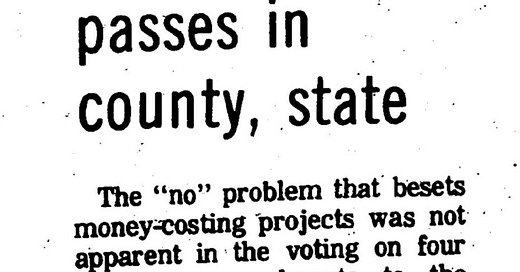Petitions have been started to begin release time Christian instruction in Door County
The petitions are listed at https://lifewise.org/interest, and can be found by typing in the name of the school district. There are petitions for some of Door County’s five school districts. At present the signature count is very low, but that may change.
In December 2024, a group of pastors in Ohio electronically sent letters to over 100 school districts in Wisconsin to promote it: https://frontlinesohio.com/index.php/2025/01/05/ohio-clergy-turn-tables-on-ffrf-atheist-group-wisconsin-youth-would-benefit-from-lifewise-video
The letter, http://frontlinesohio.com/wp-content/uploads/2025/01/2024-OHIO-CLERGY-SUPPORT-LIFEWISE.pdf, is signed by a list of pastors from Protestant churches, mostly Baptist, Church of God, and Pentacostal.
Nearly all of the released time nonprofits listed at https://projects.propublica.org/nonprofits/search?q=released+time are Christian. There are also others advocating for released time programs:
https://releasedtime.org/wisconsin
https://wifamilycouncil.org/radio/wis-positive-release-time-law
Wisconsin permits released time religious education under 118.155. Voting 74% to 26%, Door County voters approved a state constitutional amendment allowing release time programs on April 4, 1972. There were multiple referenda on the ballot, including two related to schools. The graphs show the results for the school related referenda.
The figures are from a table in the April 6, 1972 Door County Advocate.
The text of the ballot measures was printed in a sample ballot in the March 30, 1972 Door County Advocate, and official explanations for the measures were also included in the sample ballot.
EXPLANATION
Effect of Ratification.
Wisconsin statutes presently specify a number of instances where school boards are either required or allowed to grant the use of public school buildings to various groups for various nonschool purposes, sometimes with and sometimes without charge. Neither these statutes nor the constitution authorize use by a religious group. A “yes” vote on this amendment would permit the legislature to authorize the use by civic, charitable and religious organizations during nonschool hours, if the organization pays reasonable compensation for such use.
EXPLANATION
Effect of Ratification.
The constitutions does not presently permit the use of public school time and the course of instruction given children through the compulsory education law to include religious instruction. A “yes” vote on this amendment would allow the legislature to permit the public schools to release students during regular school hours to attend religious instruction elsewhere than on public school premises.
Information about the referenda was also published by the nonpartisan Wisconsin Taxpayers Alliance. The referenda information was reprinted in the final two sections of an article in the Door County Advocate dated March 20, 1972.
Constitutional amendments part of April 4 election
SCHOOL RELEASE TIME
Another question which will appear on the ballot will be:
“Shall section 3 of article X of the constitution be amended to permit the legislature to authorize the release of public school pupils during regular school hours for the purpose of religious instruction outside the public schools?”
Proponents state that the present system discriminates against those pupils who desire a public school education along with religious training.
The argument is also made that many parents who desire their children to have religious instruction cannot afford to pay the tuition at a parochial school.
Opponents state that separation of church and school is as important as separation of church and state. Release time would require the use of public school personnel for record keeping and administration.
They also contend that the proposal would discriminate against the pupil whose church does not maintain religious instruction during school hours. It favors children whose parents belong to organized religions.
SCHOOL BUILDING USE
A constitutional amendment dealing with the use of public school buildings during nonschool hours by various groups will also appear on the ballot. The question will be:
“Shall section 24 of article I of the constitution be created permitting the legislature by law to authorize the use of public school buildings by civic, religious or charitable organizations during nonschool hours upon payment of reasonable compensation for the use?”
Proponents state that the school buildings were built with community funds and, therefore, should be available for community use, providing the school district is reimbursed. Why should it be necessary for a municipality to build community facilities, while school buildings stand idle?
Opponents believe that public property should not be made available for private benefit. They also point out that in some school districts, there may be the tendency to curtail school functions in favor of revenue- producing activities.
Election results were summarized in an April 6, 1972 article which accompanied the election results table.
All referenda passes in county, state
The “no” problem that besets money-costing projects was not apparent in the voting on four proposed amendments to the state constitution in Door county Tuesday. All passed here as they did in state-wide voting.
The results can be found in the accompanying table. Approved were amendments which, in numerical order, authorize the state legislature to establish one or more systems of county government; (2) enable counties to have a medical examiner in place of a coroner; (3) permit students to be released from public schools to receive religious instruction outside the schools and (4) allow civic, religious and charitable organizations to use school buildings during non-school hours upon payment of a reasonable fee.
Figures and Advocate articles courtesy of the Door County Library Newpaper Archive
Other education-related posts
https://doorcounty.substack.com/t/education-related




